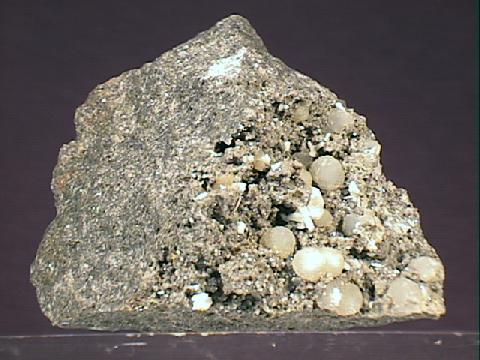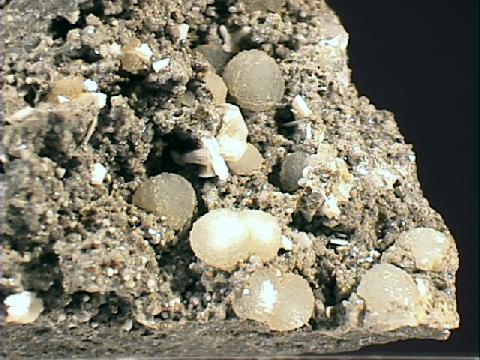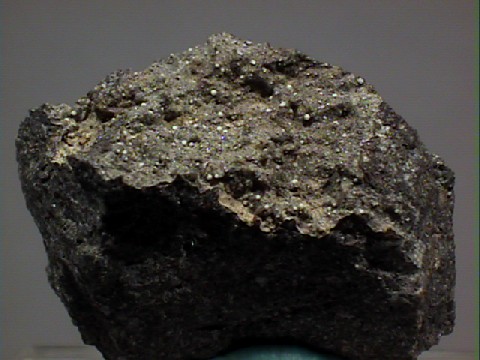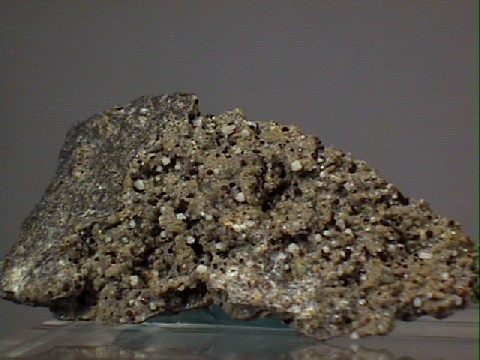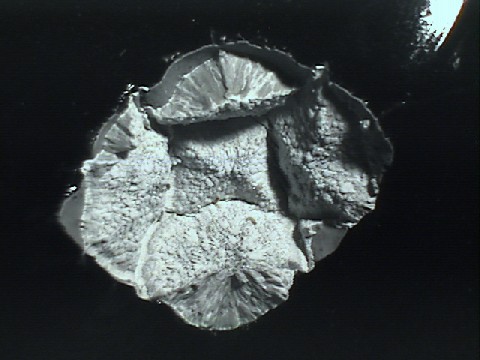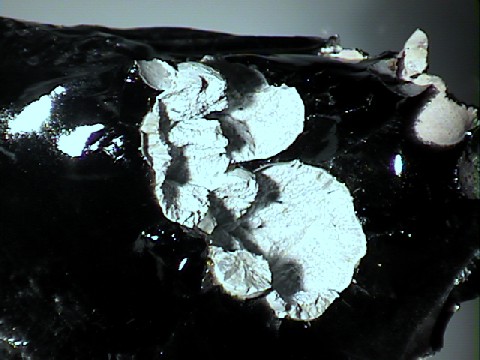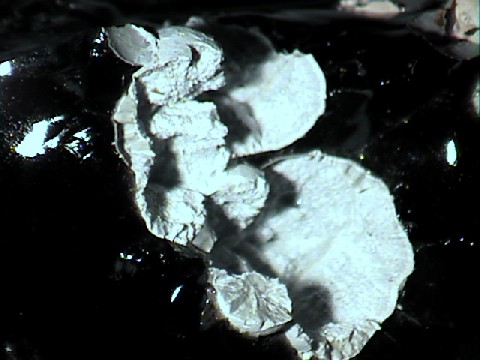 THE MINERAL CRISTOBALITE
THE MINERAL CRISTOBALITE
- Chemistry: SiO2, Silicon Dioxide.
- Class: Silicate
- Group: Quartz.
- Uses: As an indicator of high temperature crystallization and as mineral specimens.
Specimens
Cristobalite is common in volcanic rocks and many microscopic crystals are easily seen in a petrographic microscope. However, larger well formed crystals are rarer and good specimens are found in the crevices and cavities (called vesicles) of the host rocks. Cristobalite's wide spread distribution in certain types of rocks would require an abundance rating of at least common, although good macroscopic crystal specimens are hard to find. Identification of cristobalite is not necessarily easy, but it is so common in volcanic rocks that crystal habit and color are usually sufficient.
Cristobalite has a higher temperature phase called beta cristobalite. Most cristobalite is believed to crystallize as beta cristobalite which has an isometric symmetry and later as the crystal cools, it easily converts to alpha cristobalite or just cristobalite. The typical crystals of beta cristobalite are octahedrons. The conversion from beta cristobalite to cristobalite is so easy that the beta cristobalite's isometric crystals are outwardly preserved in their original form. The beta cristobalite has a higher symmetry than the tetragonal symmetry of cristobalite. The interior structure is therefore not isometric anymore and thus the octahedral looking crystals are called pseudomorphs or "false shape".
The presence of cristobalite in a rock is helpful to petrologists (rock scientists) in determining the temperature of the rock at the time it crystallized.
It will form from molten rock at temperatures above approximately 1470 degrees Celsius to the boiling point of silica.
Pressure and water content will vary this range, but it is usually a rather good indication of the extreme temperature at which the rock crystallized.
Below 1470 degrees Celsius and above 870 degrees Celsius
Cristobalite is only metastable at normal surface temperatures; meaning that, if it could, it would slowly convert to the quartz structure. But this is a slow and complicated process taking thousands of years if it happens at all. It is a slow process mostly because the transformation involves the breaking of bonds and the rearrangement of atoms. Atoms of aluminum and sodium in the structure may help the stability of cristobalite as well.
PHYSICAL CHARACTERISTICS:
- Color is colorless or white.
- Luster is vitreous.
- Transparency: Crystals are transparent to translucent.
- Crystal System is tetragonal; 4 2 2 (alpha cristobalite) and isometric; 4/m bar 3 2/m (beta cristobalite).
- Crystal Habit includes the always small (usually microscopic) and rarely well formed crystals that are pseudo-isometric, being pseudomorphs of beta cristobalite. The crystals are typically pseudo-octahedrons, some of which are twinned in a special twin called the spinel twin. The more commonly observed habit is radiating clusters and spherical aggregates.
- Cleavage is absent.
- Fracture is conchoidal.
- Hardness is 6.5
- Specific Gravity is 2.32+ (below average for translucent minerals)
- Streak is clear.
- Other Characteristics: Refractive index is approximately 1.48
- Associated Minerals include
tridymite,
sanadine , hornblende, beta quartz, olivine, pseudobrookite and augite. - Notable Occurrences include Cerro San Cristobal, Pachuca, Mexico (from where it gets its name); San Juan Mountains and Yellowstone National Park, both in Colorado and Mt. Lassen, California, USA and Italy.
- Best Field Indicators are crystal habit, environment of formation (mostly in the crevices of volcanic rocks), color and index of refraction.

